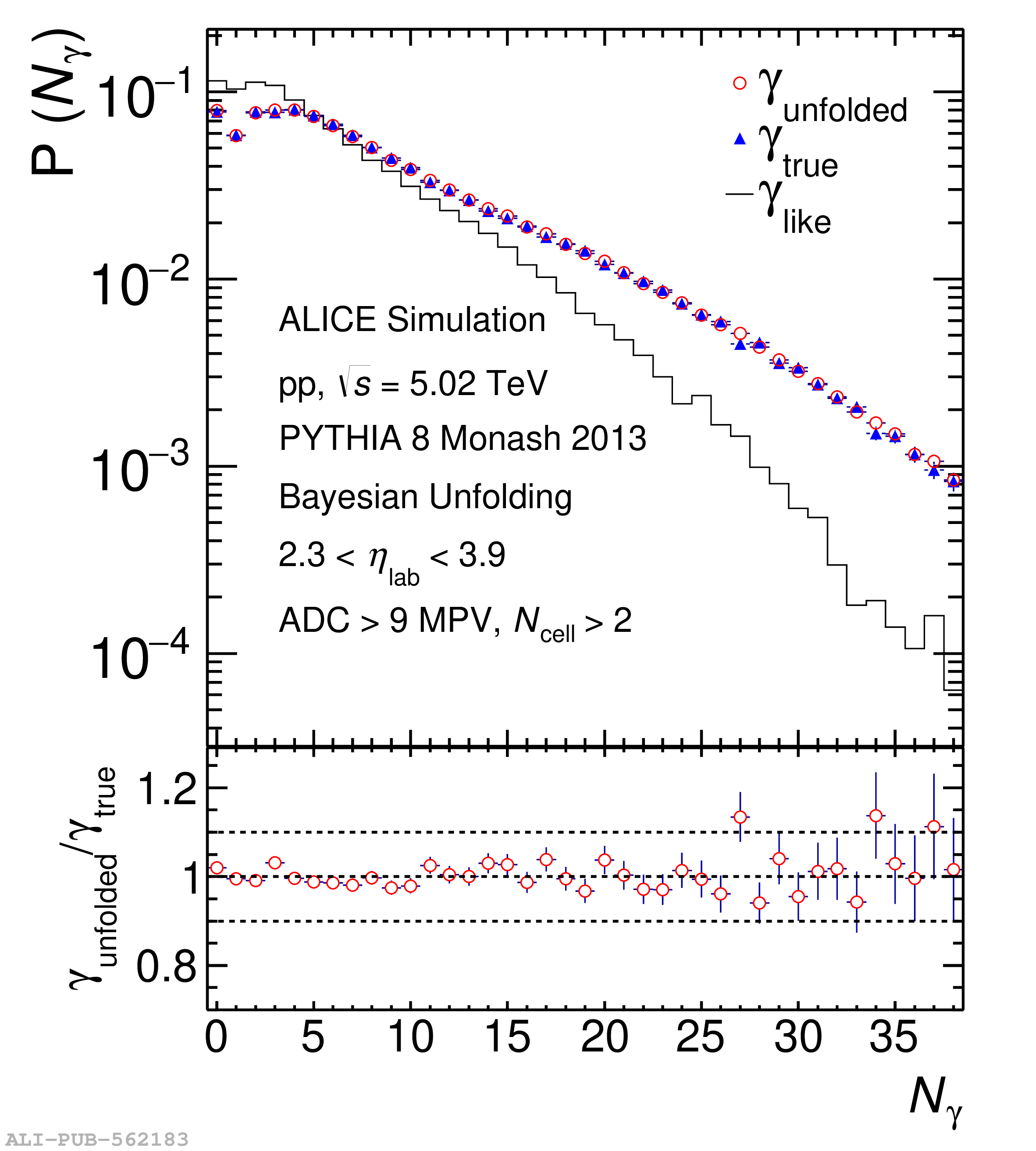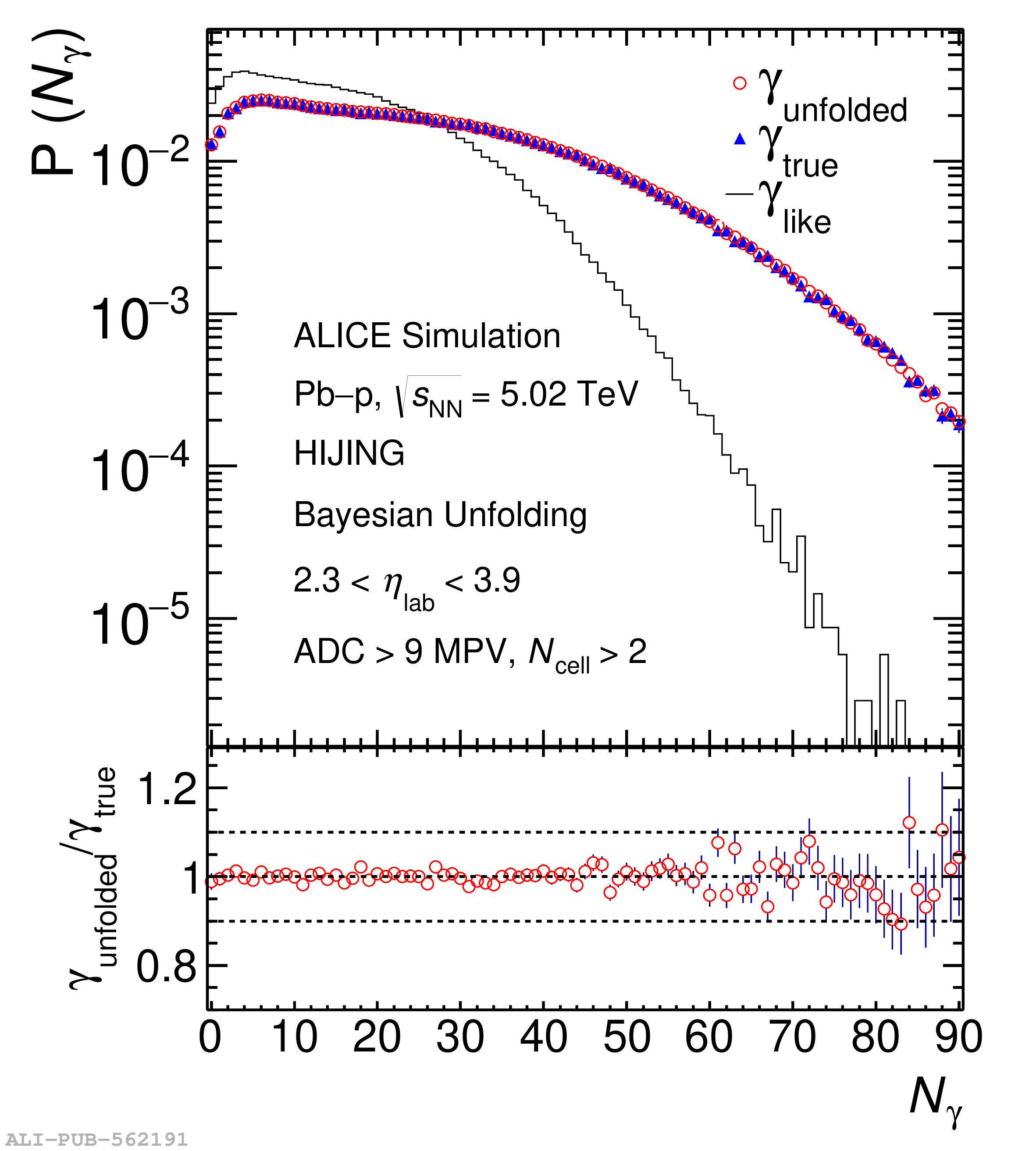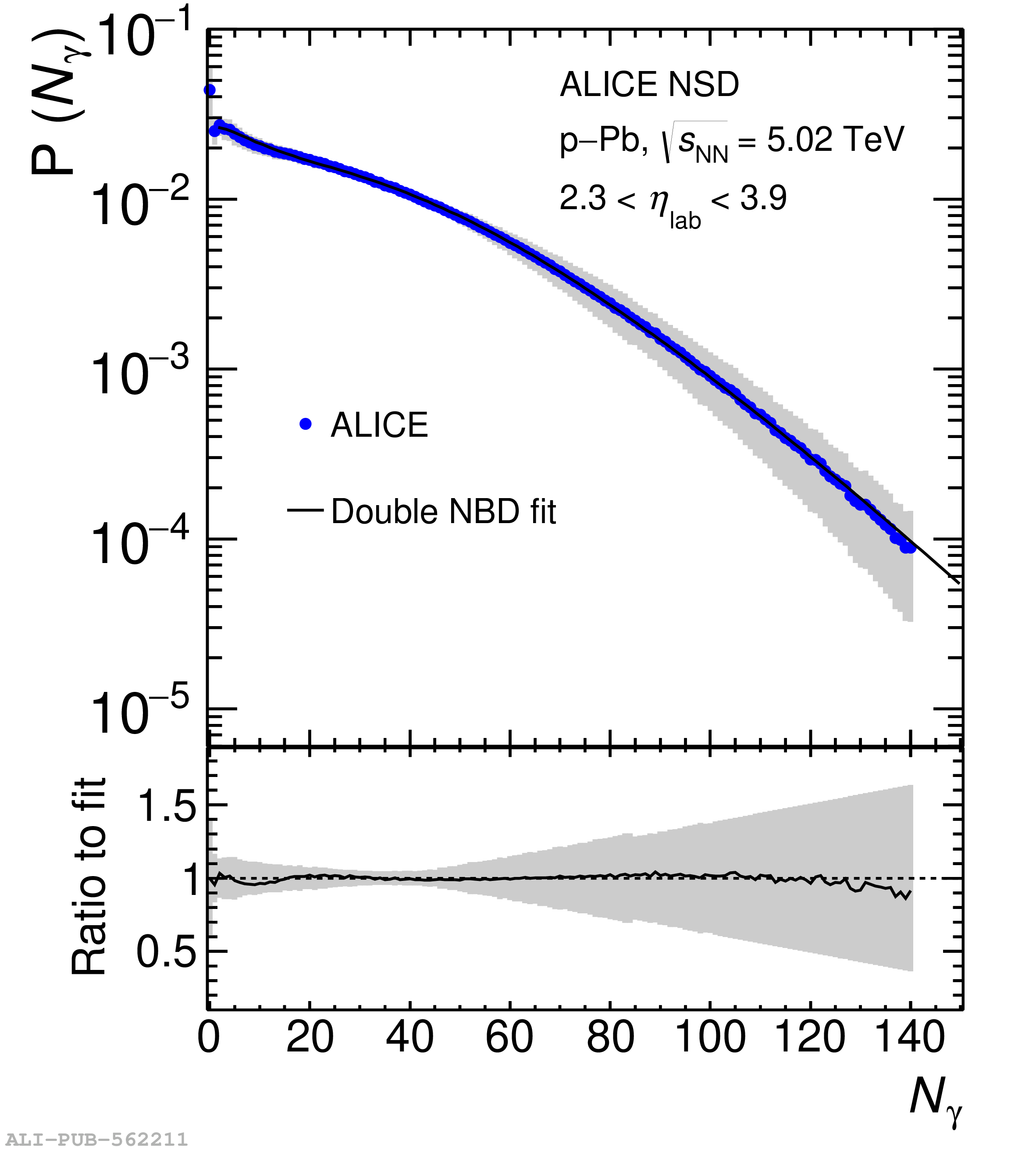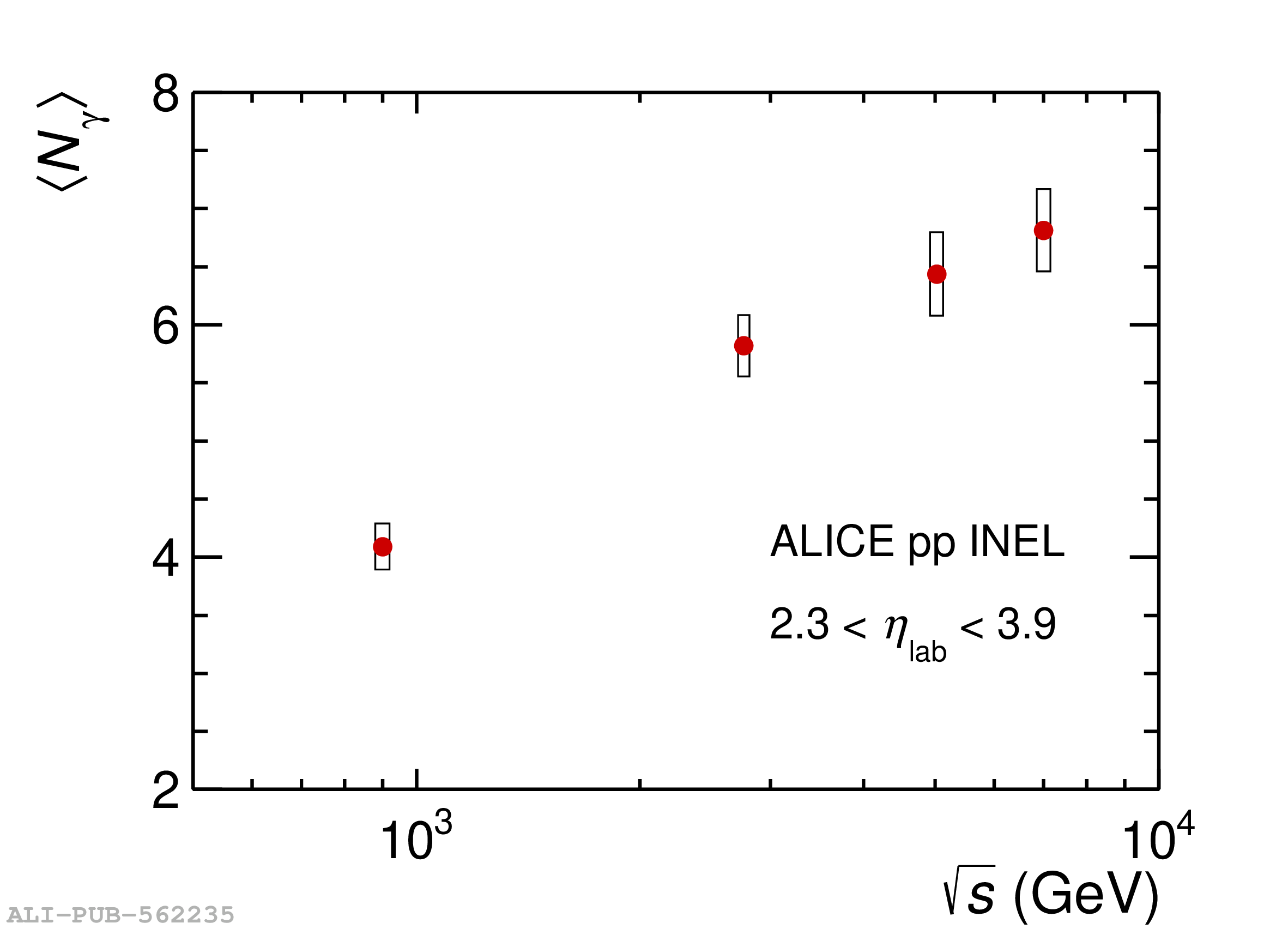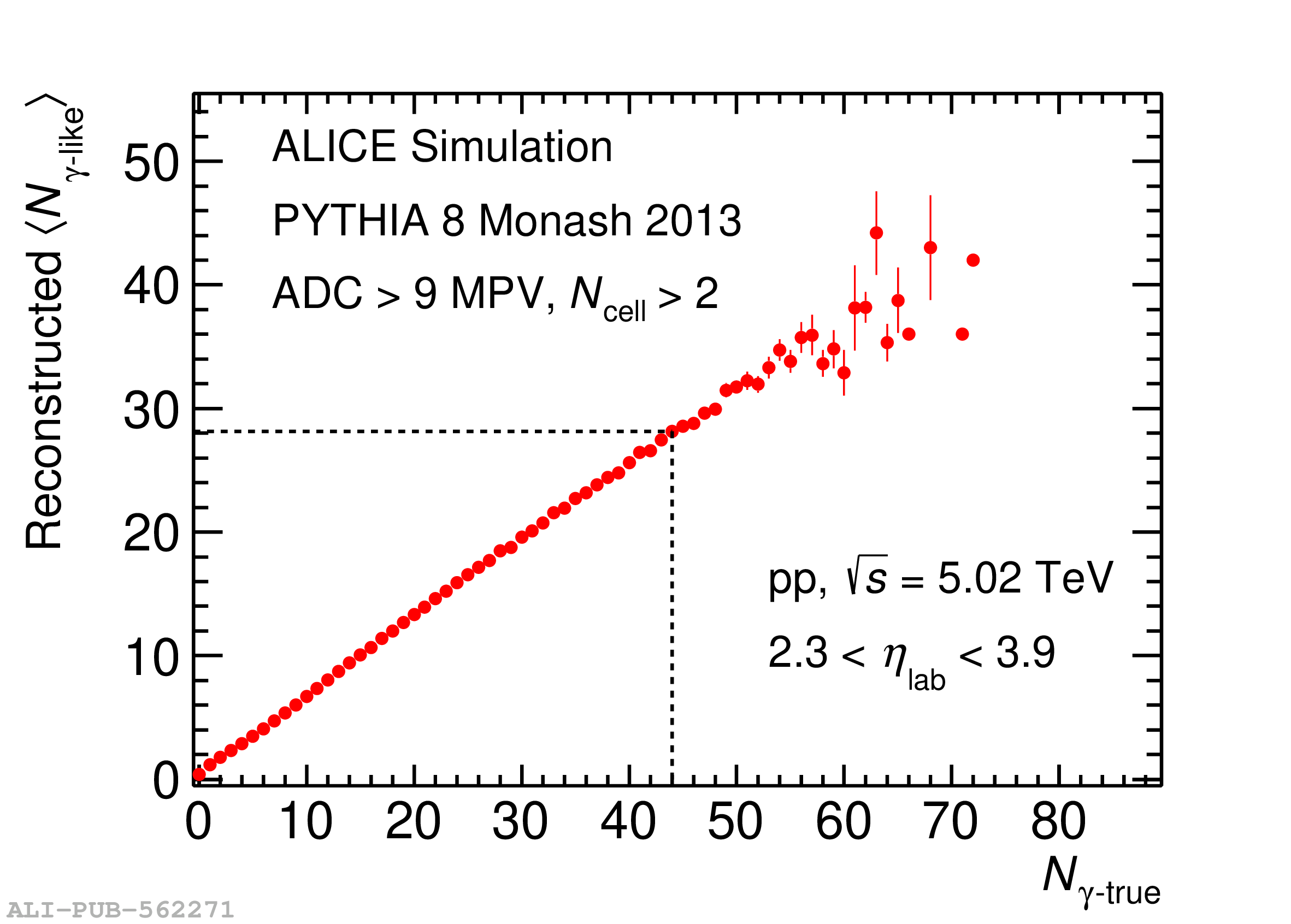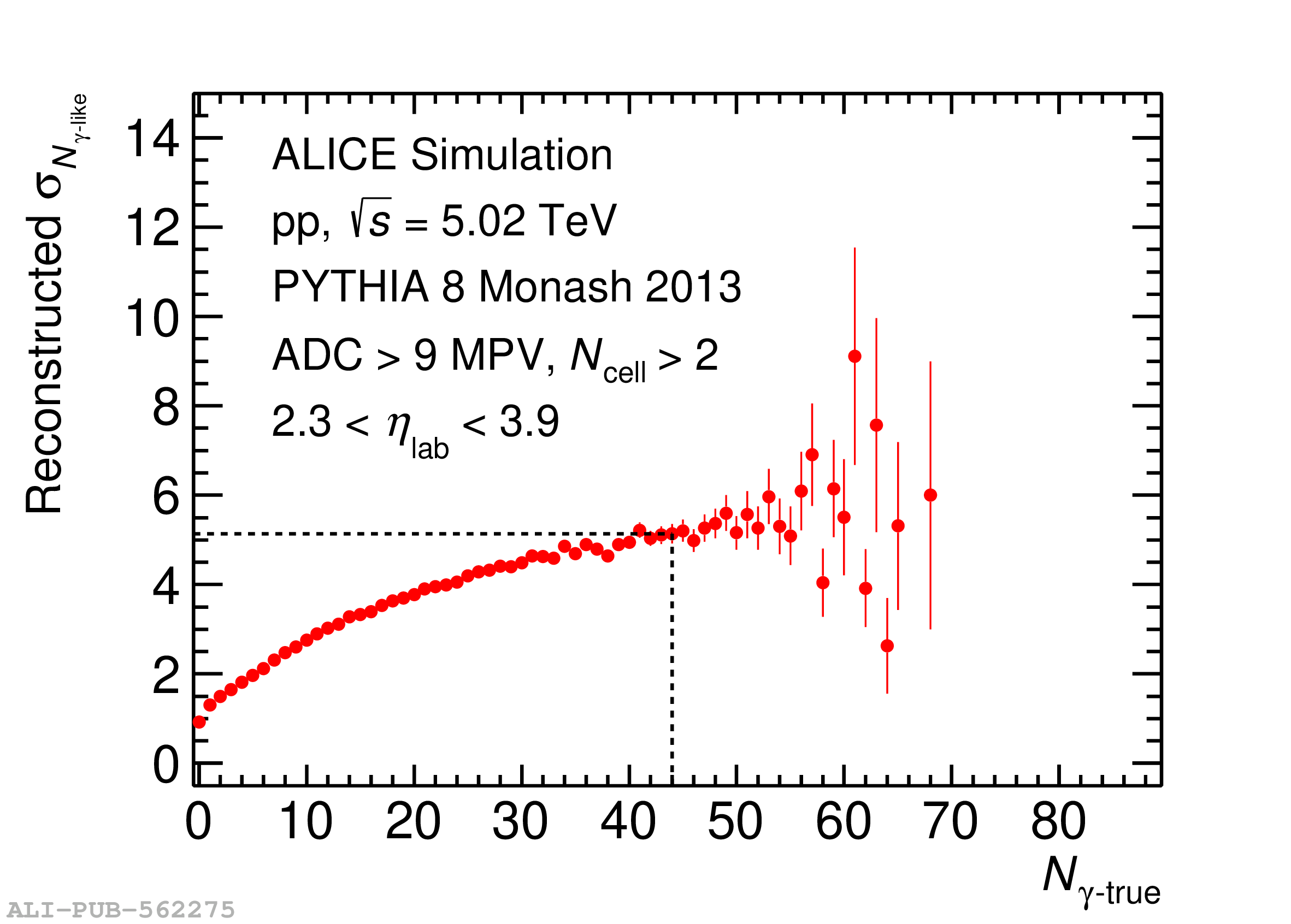A study of multiplicity and pseudorapidity distributions of inclusive photons measured in pp and p$-$Pb collisions at a center-of-mass energy per nucleon$-$nucleon collision of $\sqrt{s_{\rm NN}} = 5.02$ TeV using the ALICE detector in the forward pseudorapidity region $2.3 <~ \eta_{\rm lab} <~ 3.9$ is presented. Measurements in p$-$Pb collisions are reported for two beam configurations in which the directions of the proton and lead ion beam were reversed. The pseudorapidity distributions in p$-$Pb collisions are obtained for seven centrality classes which are defined based on different event activity estimators, i.e., the charged-particle multiplicity measured at midrapidity as well as the energy deposited in a calorimeter at beam rapidity. The inclusive photon multiplicity distributions for both pp and p$-$Pb collisions are described by double negative binomial distributions. The pseudorapidity distributions of inclusive photons are compared to those of charged particles at midrapidity in \pp collisions and for different centrality classes in p$-$Pb collisions. The results are compared to predictions from various Monte Carlo event generators. None of the generators considered in this paper reproduces the inclusive photon multiplicity distributions in the reported multiplicity range. The pseudorapidity distributions are, however, better described by the same generators.
Eur. Phys. J. C 83 (2023) 661
HEP Data
e-Print: arXiv:2303.00590 | PDF | inSPIRE
CERN-EP-2023-026
Figure group




